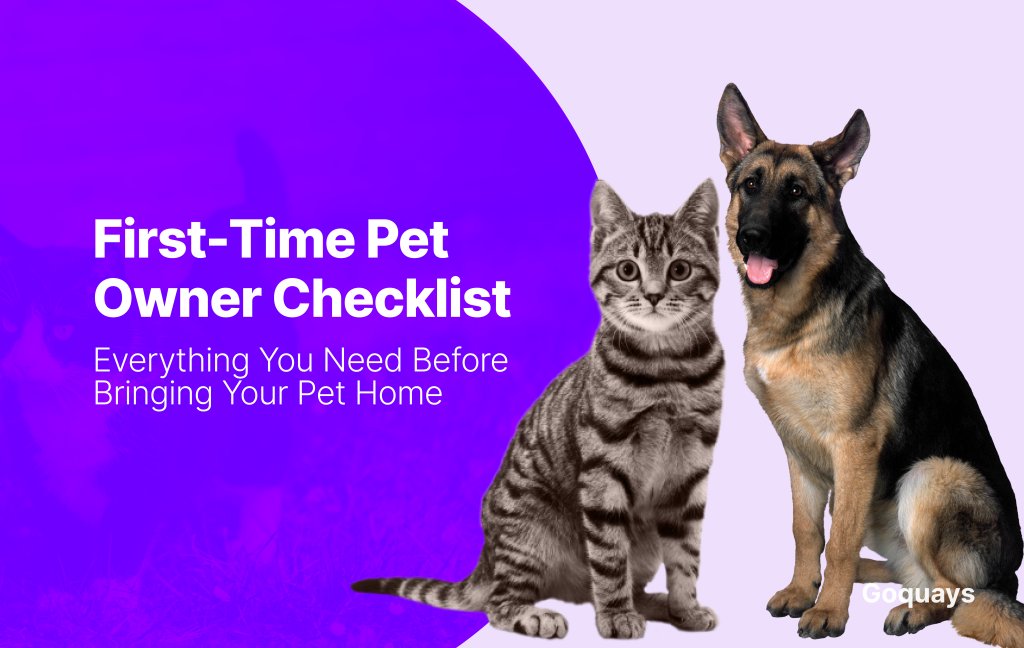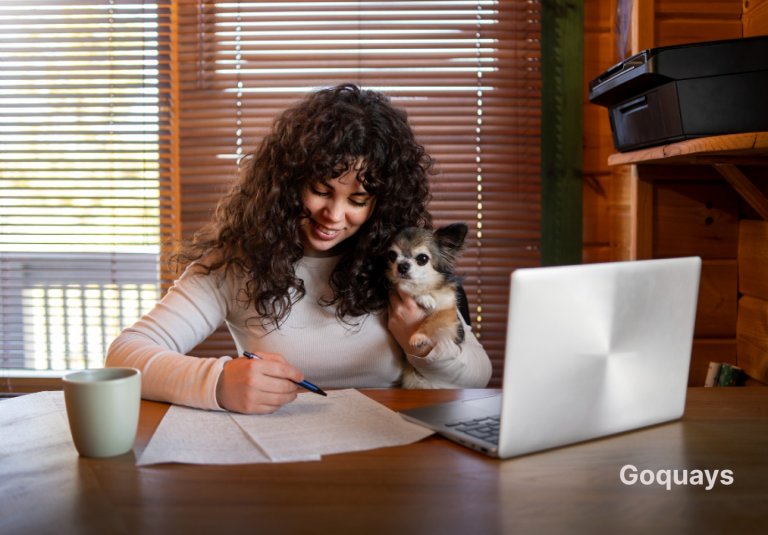As a first time pet owner, beginning your pet parenting journey can feel exciting and overwhelming. With so many things to prepare and decisions to make, it’s easy to feel unsure of where even to start. Questions might be racing through your mind like: What do I need to buy? How do I prepare my home? What about vaccinations, vet visits, food, or pet insurance?
At times, it might even feel like you are not cut out for this(pet parenting), you feel unprepared, or not doing enough. But take a breath; you are not alone. Every pet parent has felt this way at some point. No one figures it all out right from the start, which is perfectly okay.
To help ease the process, we have put together a comprehensive first time pet owner checklist that walks you through everything you need to do before bringing your new pet home.
And to make your transition even smoother, consider joining our pet parent community. It’s a safe, supportive space where you can ask questions, share wins (and oops moments), and connect with other new and experienced pet owners like you.
Choosing the right pet for you
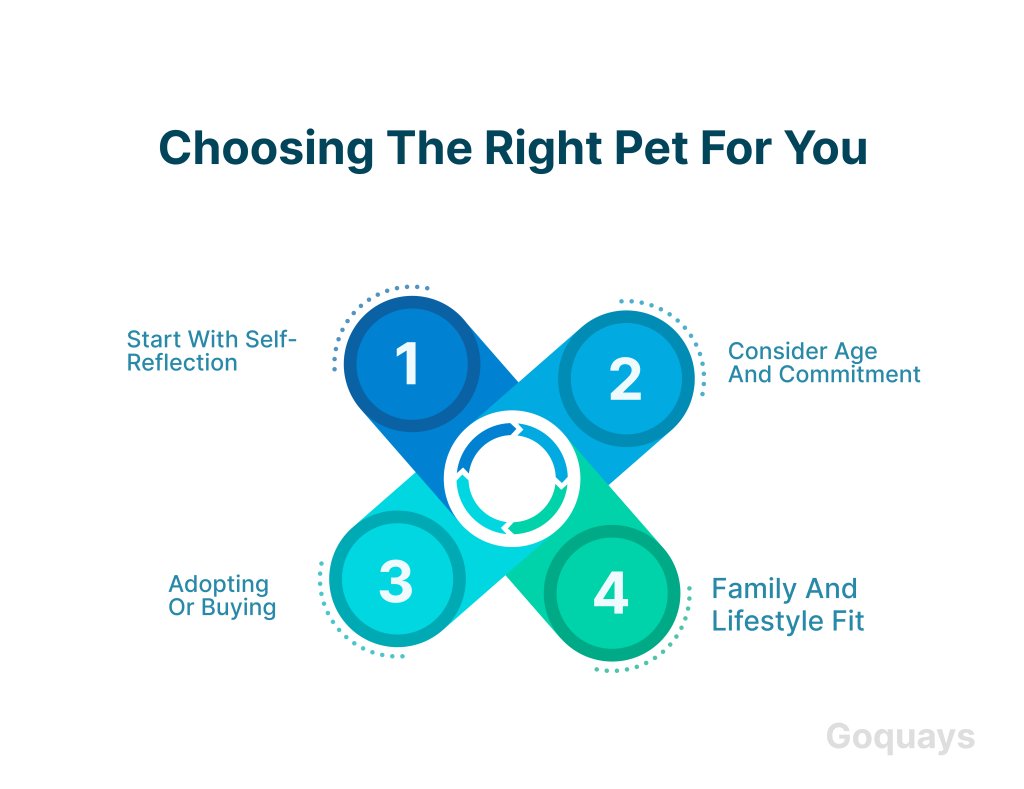
Before you bring a pet home, it’s important to ask yourself: ‘Is this the right pet for my lifestyle? ’ This is because taking care of pets requires time and effort, which means you need to choose a pet that aligns with your lifestyle(daily routine, home environment and other important factors).
Here is what you need to consider to choose the right pet;
- Start with self-reflection
By asking yourself;
- How much time can I realistically dedicate to a pet each day?
- Do I travel frequently?
- Am I active or laid back?
- Do I live in a house with a yard or an apartment?
You need to ask yourself all these questions because, for example, dog breeds like Border Collies or Huskies need lots of exercise and mental stimulation, while a cat or small pet like a rabbit might be better suited for a quieter or smaller living space, which may not exactly align with your lifestyle.
- Consider age and commitment
The age of your cat is also a factor to consider. If you are bringing home a Puppy or kitten, they require more attention, training, and patience. On the other hand, a senior pet is most likely already trained and a lot calmer.
- Adopting or buying
Do you intend to adopt your new pet, or do you want to buy from a breeder? Adoption can be deeply rewarding, giving a second chance to a pet in need, but it may come with unknowns around health or behaviour. A responsible breeder can offer more predictability but ensure they follow ethical practices.
- Family and lifestyle fit
Consider your family members and your overall lifestyle. Some breeds are better suited for families, while others may be too energetic or sensitive. Think long-term: pets live for many years, and your lifestyle may evolve, so factor in things like moving, starting a family, or career changes.
Essential supplies category: What you need before your pet comes home

Once you have decided on the right pet for your lifestyle, it’s time to note the important supplies that will make them settle in comfortably. Here is a list of must-haves every new pet parent should have in place.
- Food and water bowls: Invest in durable, easy-to-clean bowls. Stainless steel or ceramic options are often better than plastic, as they are more hygienic and less likely to cause allergic reactions.
- Pet food: Choose age-appropriate, vet-recommended food for your pet (puppy/kitten, adult, or senior formulas). If you are unsure what to start with, ask your vet or shelter staff for suggestions. It’s wise to begin with what they are already eating to avoid digestive upsets. However, if your pet is a newborn, you could weigh your options by considering raw vs processed vs homecooked foods and decide the best one for your pet.
- Bedding: Your pet needs a safe and comfortable place to rest. Look for washable pet beds with enough cushioning. Dogs may prefer crate beds, while cats often love cosy hideaways or window hammocks.
- Toys: Toys provide stimulation and help prevent destructive behaviour. For dogs, chew toys and puzzle games are great. For cats, think feathers, tunnels, or scratching posts. Rotate them regularly to keep things exciting.
- Grooming essentials: Brushes, pet-safe shampoos, nail clippers, and even toothbrushes are all helpful. Some pets need more grooming than others, so research your breed’s needs.
- Collar, leash, and I.D. tag: For dogs and some adventurous cats, you will need a sturdy leash and collar. Include an ID tag with your contact details in case they get lost.
- Litter box, puppy pads: Cats need a clean litter box and litter; puppies may need training pads initially. Keep waste areas clean to encourage good habits.
Carrier or crate: A safe crate or carrier is essential for travel and vet visits. It also doubles as a cosy retreat, especially during the early days in a new environment.
Vet care and health essentials
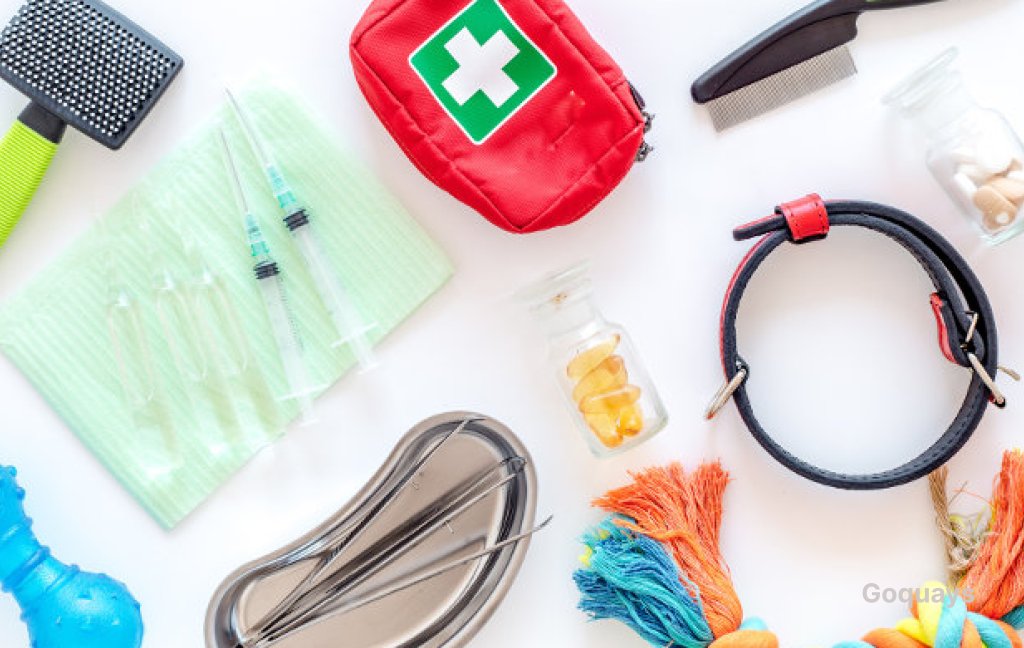
One of the most important steps in becoming a responsible pet parent is ensuring your new companion’s health and well-being from day one. Just like humans, pets need routine medical care, early vaccinations, and preventive treatments to live long, healthy lives.
- Choose a Trusted Vet
Start by researching local veterinary clinics. Ask for recommendations from friends or other pet owners in your area. Once you choose a vet, schedule an initial check-up soon after bringing your pet home. This visit will help identify any immediate health concerns and give you a baseline for your pet’s ongoing care.
- Vaccinations
Puppies and kittens need a series of vaccinations in their early months to protect them from diseases like parvovirus, distemper, rabies, and feline leukaemia. Your vet will provide a vaccination schedule tailored to your pet’s age, breed, and health status.
- Flea, Tick, and Worm Prevention
Parasite prevention is a must. Fleas, ticks, and worms can not only make your pet uncomfortable but also lead to serious health issues. Your vet can recommend appropriate treatments, such as monthly spot-on treatments, chewables, or tablets, based on your pet’s weight and lifestyle.
- Spaying or Neutering
Unless you plan to breed responsibly, spaying or neutering is a vital step to avoid unwanted litters and reduce health risks. It also helps prevent behavioural issues like aggression or territorial marking.
- Health Records
Keep a file or digital folder for your pet’s health records. This should include vaccination history, vet visits, prescriptions, and any diagnoses. It will be useful for boarding, grooming, or emergencies.
- Microchipping
Microchipping your pet increases the chance of being reunited if they get lost. It’s a quick, safe procedure and often a requirement for pet insurance policies.
Pet Insurance – Why it’s important to opt for one early.
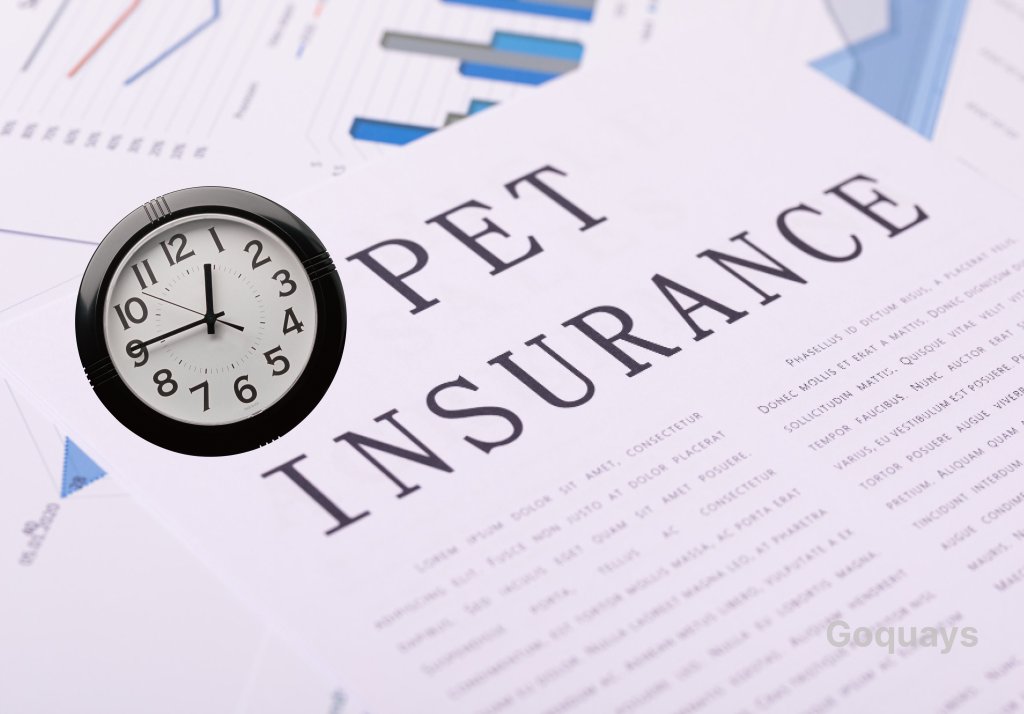
As a first-time pet owner, one thing you might not expect is how quickly vet bills can add up. Especially when emergencies or chronic conditions arise. That’s where pet insurance comes in. It’s one of the smartest decisions you can make for your pet’s long-term care and your financial peace of mind.
Why you shouldn’t wait
Many pet owners delay getting insurance, thinking they will only need it when their pet is older. But accidents and illnesses can happen at any age. Whether it’s a sudden injury from a fall, a digestive issue, or an unexpected allergic reaction, having coverage from day one ensures you are never caught off guard by expensive vet bills.
Most providers won’t cover pre-existing conditions, so the earlier you sign up while your pet is still healthy, the better your chances of full coverage for future treatments.
What does pet insurance typically cover?
Pet insurance policies vary, but most plans cover:
- Accidents and emergency treatment
- Illnesses and diagnostic tests
- Prescription medications
- Surgeries and hospitalisation
- Some routine care (depending on the plan)
You can also choose policies that include dental care, behavioural treatment, or complementary therapies.
How much does pet insurance cost?
The cost of pet insurance depends on your pet’s species, breed, age, and where you live in the UK. On average, you might pay between £10 and £30 per month for basic coverage. While it’s an ongoing cost, it can save you hundreds or even thousands of pounds down the line.
Training and socialisation technique basics

Training is the basic foundation of a well-adjusted pet. Here are some training basics to explore with your pet.
- Start with the Basics
Begin with simple training commands like sit, stay, come, and no. These aren’t just tricks, they are essential for safety and communication. Use positive reinforcement such as treats, toys, or praise to reward good behaviour. Pets respond far better to encouragement than punishment.
Crate training is also highly recommended for dogs. It gives them a safe place to relax and helps with toilet training and anxiety management. For cats, litter training typically comes more naturally, but it’s still important to provide a clean, accessible box from day one.
- Consistency is Key
Pets learn best through routine. Use consistent commands and reward behaviours promptly. Short, daily sessions (5–10 minutes) are more effective than long, irregular ones. Everyone in your household should be on the same page with rules to avoid confusion—no jumping on the sofa for one person but not the other.
- Socialisation starts early
Expose your pet to different environments, people, sounds, and other animals gradually. For puppies and kittens especially, early exposure helps reduce fear and aggression later in life. Walks in the park, car rides, and supervised playdates can all help. If you are struggling or want to build your confidence as a pet parent, consider enrolling in a basic obedience class or working with a certified trainer.
- Training builds trust
Training isn’t just about teaching commands, it’s about building trust and communication between you and your pet. When done right, it strengthens your bond and sets the tone for a respectful and loving relationship that lasts a lifetime.
Emotional preparation for pet ownership
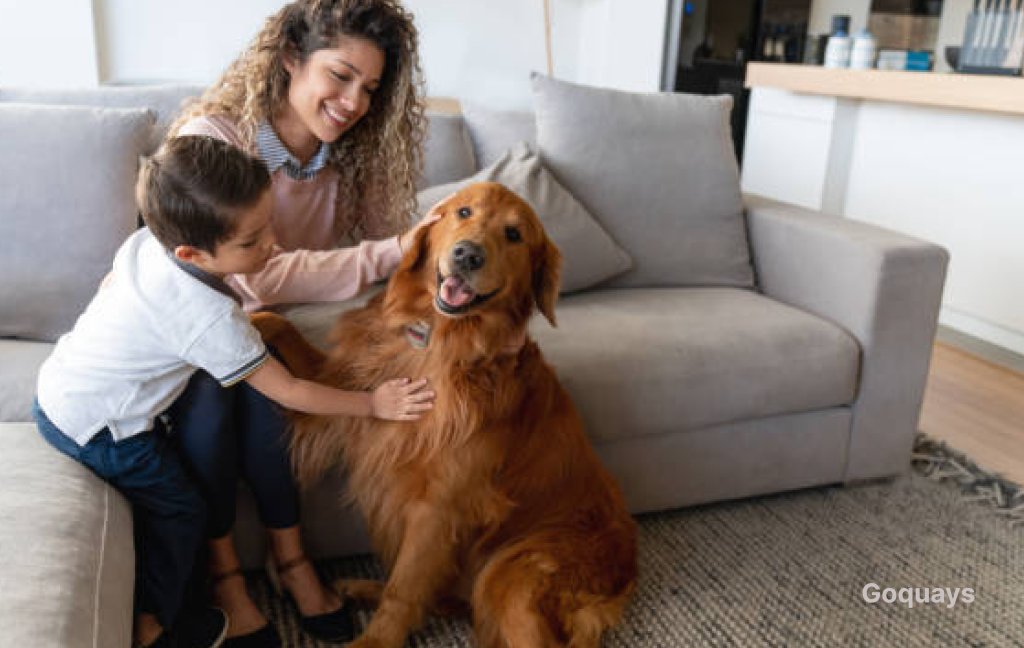
While stocking up on supplies and prepping your home is important, it’s also important to prepare yourself emotionally for the journey ahead. Bringing a new pet into your life is a beautiful and rewarding experience, but it can also be a rollercoaster of emotions, especially in the early days.
Your pet will need time to adjust, and so will you. It’s normal to feel overwhelmed, second-guess your decision, or worry that you are not doing everything right. Be patient with yourself and your new pet. Mistakes will happen (accidents on the carpet, chewed-up shoes, or loud meowing at 3 a.m.), but those early challenges are part of the bonding process.
Focus on building trust, offering consistent care, and creating a calm environment. Your pet doesn’t need you to be perfect—they just need you to be present, loving, and willing to learn alongside them.
It’s best if you can connect with fellow pet parents or join our online community to share your experiences. You are not in this alone.
Conclusion
Preparing for your first pet may feel overwhelming at times, but with the right guidance, you are more ready than you think. From selecting the perfect pet for your lifestyle to gathering supplies, arranging vet visits, and understanding emotional readiness, you have now laid the foundation for a happy, healthy relationship with your new companion.
Remember, no pet parent gets it all right on day one. What truly matters is your commitment to learning, loving, and growing alongside your furry (or scaly or feathery) friend. The journey ahead will be full of little messes, big milestones, and plenty of unforgettable moments.

